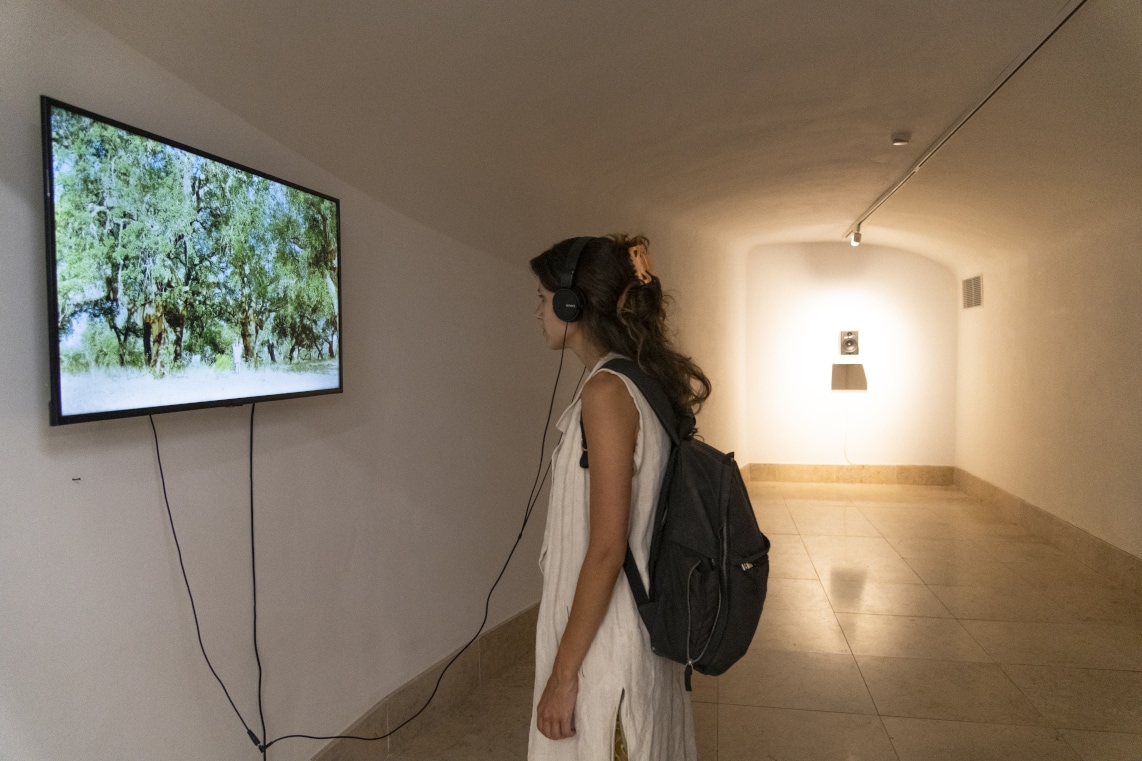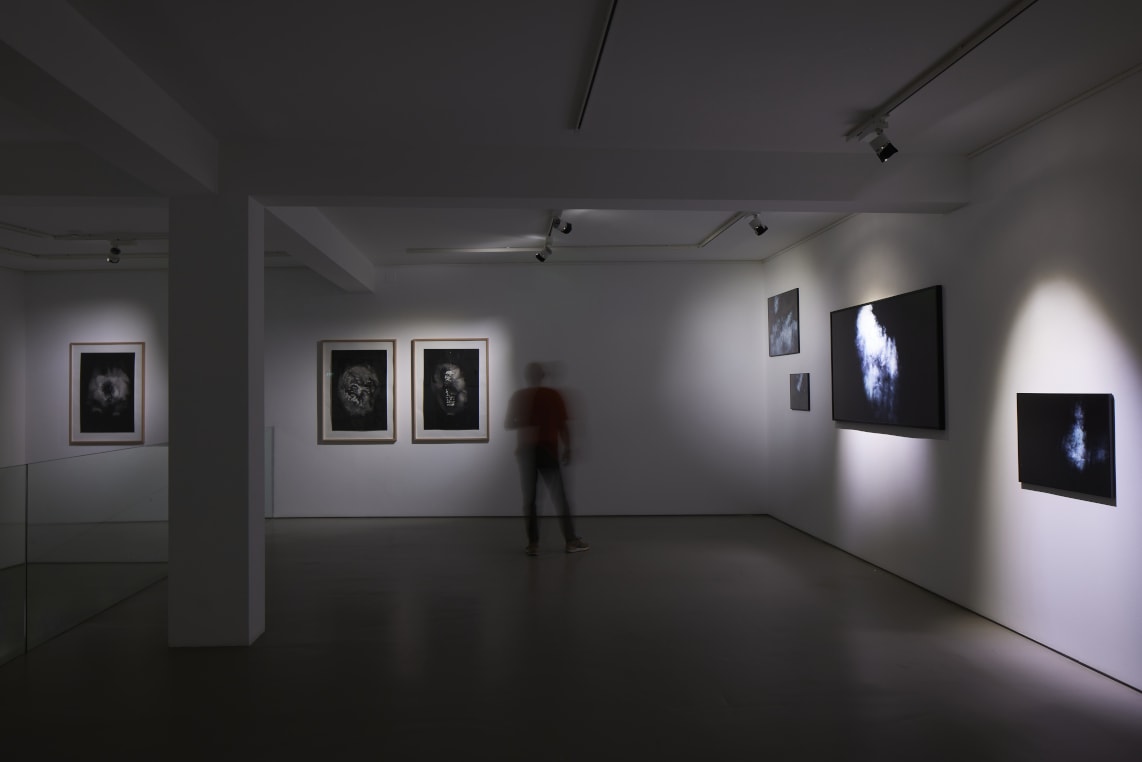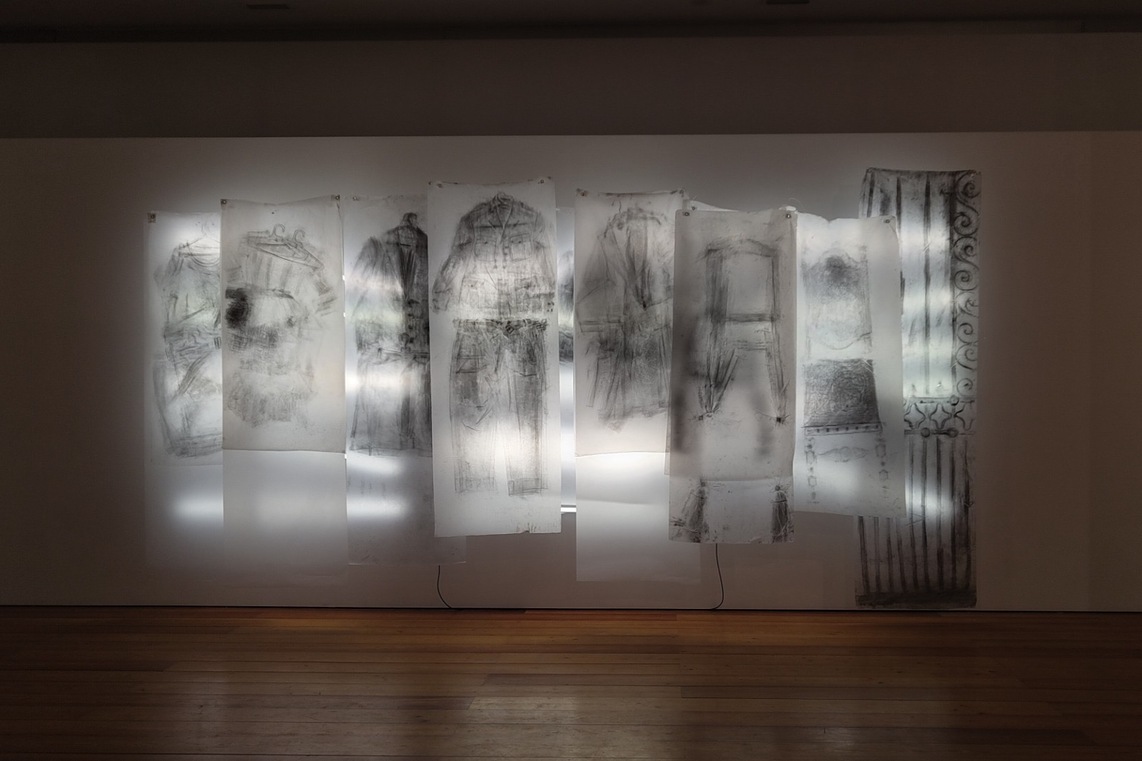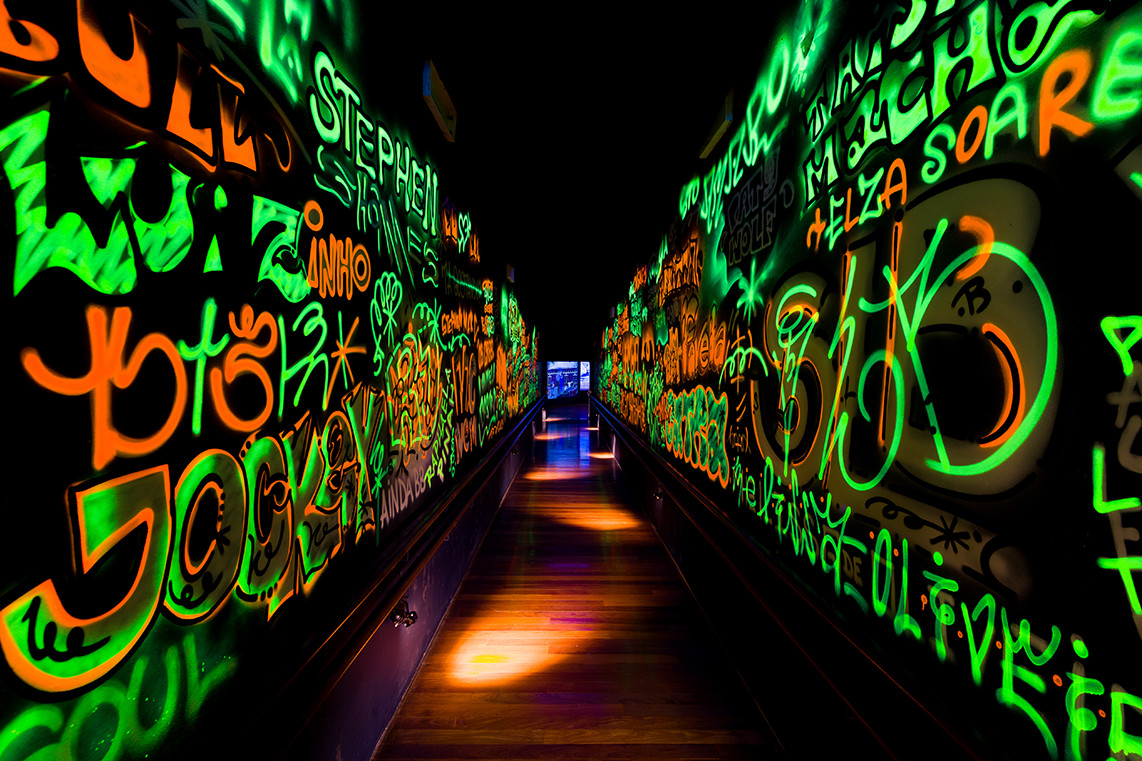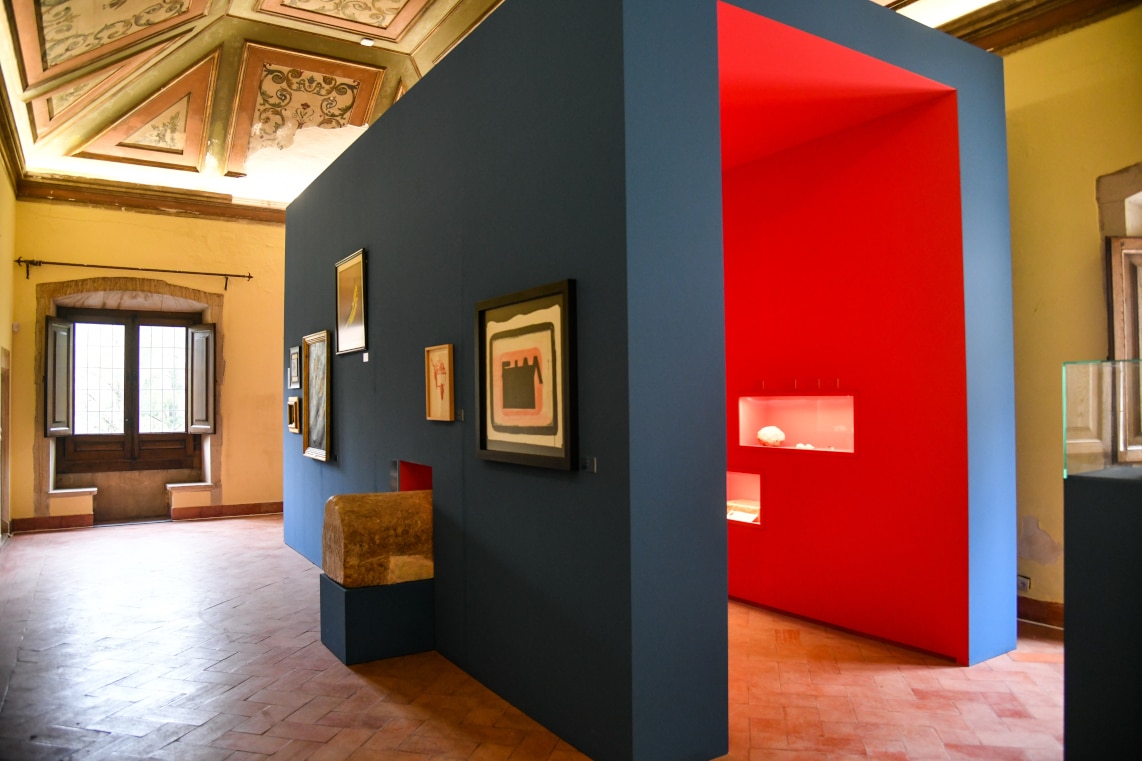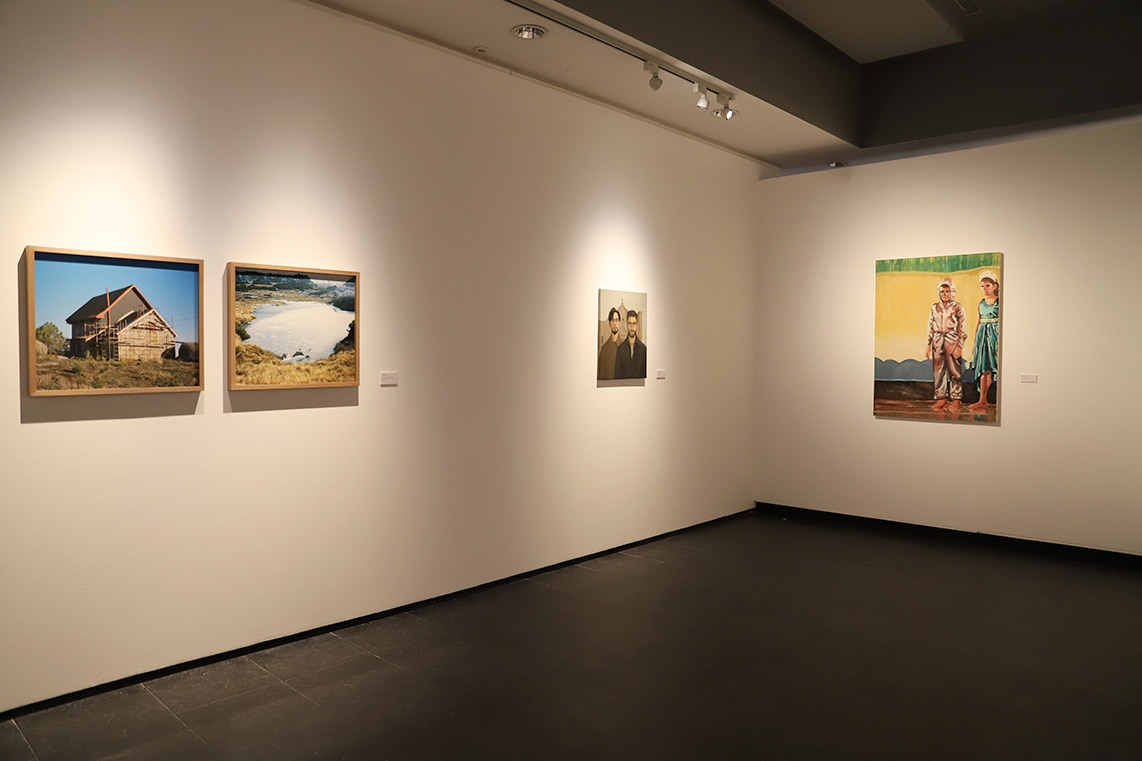When entering the temporary exhibition Visiting Artwork: Rembrandt, Self-portrait wearing a beret and two chains, the visitor is surrounded by a vast whirlwind, made up of the life-like eyes of the figures in the Calouste Gulbenkian Museum’s Portrait Gallery. Until September 12, in a venue where only the typical crackling sounds of the wooden floor interrupt the silence uttered by the colossal frames, are three examples of the works of Rembrandt Harmenszoon van Rijn (1606-1669), the most prolific Dutch painter of his period, in dialogue with the other portraits in the room: the 17th-century European oil paintings, part of the Founder’s collection.
At an angular end, with a foreground orange intervention, the works are displayed side by side; Pallas Athena (1657) and Portraint of an Old Man (1645), in addition to the famous work that gives the show its title: Self-portrait wearing a beret and two chains (1640), sumptuously placed alone on the adjacent wall, on loan from the collection of the Thyssen-Bornemisza Museum in Madrid. Discreetly and sweepingly, the small temporary exhibition appears before the eyes as a surprise to the Calouste Gulbenkian Museum’s unsuspecting visitors.
Metaphorising the moment when a reader opens the page of a new novel, the viewer of this exhibition performs the visual reading through the brushstroke description of the different characters’ eyes on display. From the Portrait of Sara Andriesdr. Hessix (1626) by Frans Hals (1582-1666), to Portrait of a Man (1620) by Anton Van Dyck (1599-1641), monumentally distinguishing Rembrandt’s self-portrait before the visitor. This painting, unlike the others, could be both a character and the author.
The self-portrait is a sub-genre of the portrait, which has existed since the dawn of Western art history, but which only spread among painters, designers and sculptors from the 16th century onwards. Conceiving self-portraits is tied to the spread of mirrors on the European continent and the consequent broadening of reflections on the concept of identity in art, also driven by the authorial independence gained by artists from the Renaissance onwards. According to Olivares, “La identidad acaba siendo una tabla de madera a la que agarrarse en una deriva persistente que se suele llamar vida” [1]. For a long time, painting and photography assumed themselves capable of transposing some reality of mirror reflection, through a semi-permanent media (the accuracy varies depending on the medium used). If there was an interpretative and authorial hint in portraits, a presence visible from afar, distinguishing the creative individuality of each artist in self-portraits, then this would be their epitome[2].
Jan Van Eyck, Alberti, Dürer and Velasquez were some names that experimented with the self-portrait before Rembrandt. However, the latter was one of the first known cases to produce them systematically, throughout his life. According to Ramirez, the self-portrait is an economic exercise. The reasons are monetary and dynamic, important factors for the sub-genre to emerge on the European continent after the Renaissance. However, the theorist also speaks of “conceptual problems”[3].
Rembrandt had an artistic career with more than 300 works produced. In this grandiose collection, fifty are self-portraits, with great variety in composition, dress, staging and expressions. This plurality illustrates the conceptual problem proposed by Ramirez. Who or what is portrayed by Rembrandt in the self-portraits? This questioning recalls the onomastic coincidence in literary autofiction. Autofiction is a term used to refer to a fictional autobiography, an apparent contradiction, first coined in 1977 by Serge Dubrouvsky. The onomastic coincidence of this narrative style occurs when the author is both character and narrator of the novel. In addition to the natural ethical conflicts of a biographical novel, autofiction also suspends the reader’s disbelief, as truth is left in check. Is the book a faithful portrait of the author’s reality or fiction?
Self-Portrait wearing a beret and two chains (1640) is in deep dialogue with the notion of ut pictura poesis. As in literature, it talks about the layers of fiction added to the author’s figure to create an autre réalité of meanings. As MCG says in the publication about this temporary exhibition, “The costume is identical to that worn by Dirk Bouts (1410/1420-1475) and Rogier van der Weyden (c.1399-1464) in two engravings by Hieronymus Cock (c. 1510-1570), published in Antwerp in 1572, where Rembrandt is said to have drawn inspiration from.”[4] Also according to the publication, this would be an ambiguous gimmick, proposing to represent a uomo Famoso in the context of a long artistic tradition, and to underline a “raison détre of Rembrandt’s fame”.
As much as the figure of the self-portrait is the author being portrayed by himself, as the name implies, this does not mean that a self-portrait is the materialisation of truth, and not a creative fiction of the author. Despite being an addition to the vivid eyes of the MCG Portrait Gallery, Rembrandt’s Thyssen self-portrait stands out as having a dubious, in-between aura that sits in the purgatory of representation. A hybrid genre between reality and fiction, which proves the human desire to stand within the possibility of the beyond. To embody this natural craving may have been a singular moment in the 17th century. And, unlike the equestrian portraits of royalty, it did not cease to be a recurring trend in pictorial productions. Just like what the Dutch painter materialised in 1640, it can be done quickly nowadays, without us needing to be experts in painting. We just need to open the phone’s front camera and press the centre of the screen.
Visiting artwork: Rembrant, Self-portrait wearing a beret and two chains by Rembrandt Harmenszoon van Rijn (1606-1669) is at the Calouste Gulbenkian Museum until September 12.
NOTES
1. Olivares, R. (2003). ¿Quién soy Yo?. Autorretratos/Self-portraits in EXIT, 10, 10–12.
2. Ibidem.
3. Ramirez, J. A. (2003). Automodelo e Identidad quebrada. Autorretratos/Self-portraits in EXIT, 10, 18–21.
4. Sampaio, L. (2022). Rembrandt Autorretrato. Calouste Gulbenkian Museum.
